Fort Siloso: The Gun Museum - Muzzle Loading Cannon

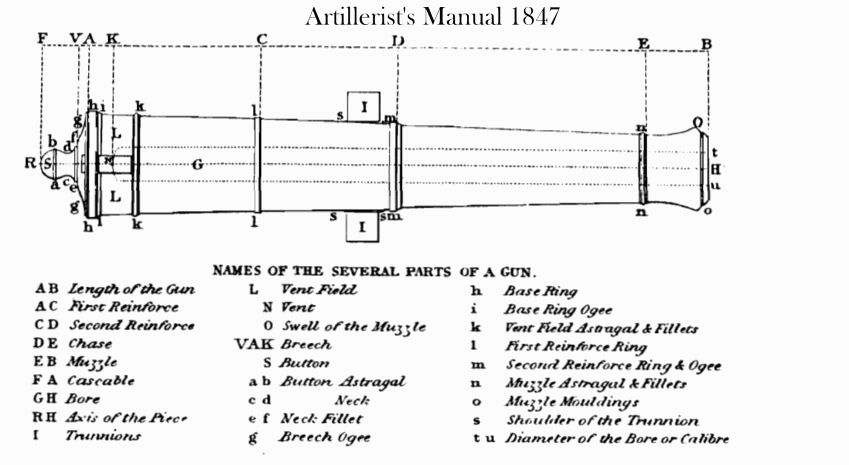
TRhe parts of a muzzle loading cannon
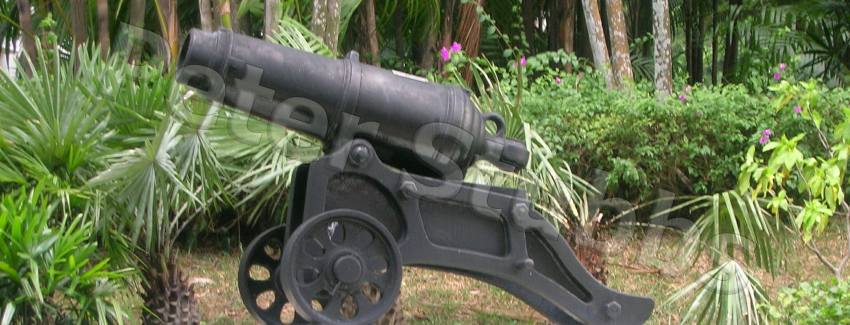
A Carronade
ABOVE: A British Carronade. This gun was presented to the Singapore Gun Museum Sentosa on 22nd October 1971 by Lt General Sir Peter Hunt, KCB, DSO, OBE, Commander Far East Land Forces.
The Carronade, nickname ‘The Smasher’, was a short smooth bore, muzzle loading naval weapon. It was designed to fire a heavy shot at short ranges. The Carronade was invented by General Robert Melville (1723–1809), the son of a Scottish minister. It was first manufactured in a Scottish ironworks called the Carron Ironworks Company in 1778, hence its name.
Half the weight of an equivalent long gun, a Carronade could throw a heavy ball of up to 42 Lbs (19Kg) up to 1200 yards (1100 metres). Carronades were manufactured in 68, 42, 32, 24, 18, 12 and 6-pounder calibres. They were generally mounted on traversing sliding carriages on ships. They found use both on naval and merchant vessels. Their lack of range was disadvantageous as it often allowed an enemy armed with conventional cannon to stand off at a safe distance and and fire without fear of being hit itself.
Istana Guns
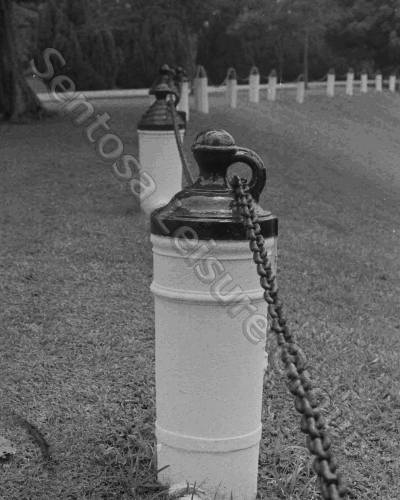
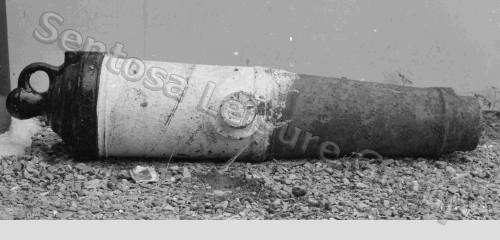 Moved to Fort Siloso in 1978, These guns, so called as they guns used to be at the Istana, the residence of the President of Singapore. There they were sunk on the edge of the lawn, muzzle down so that only the breech end showed, and used as barriers to keep visitors off the grass (Left).
Moved to Fort Siloso in 1978, These guns, so called as they guns used to be at the Istana, the residence of the President of Singapore. There they were sunk on the edge of the lawn, muzzle down so that only the breech end showed, and used as barriers to keep visitors off the grass (Left).
The guns are naval muzzle loaders, and seemingly 6 and 9 Pounder. They were mounted in rows facing outwards through ports (openings) in the side of warships.
It is likely that these guns were left here by visiting ships as they were no longer required. In the years following Raffle’s landing in Singapore, cannon were growing in size, and became harder hitting at longer ranges. Small guns such as these would be less useful to a ship.

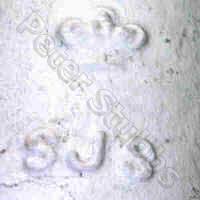 LEFT & RIGHT: Detail on two of the guns. The photograph on the left tells that the gun is a 9-Pounder.
LEFT & RIGHT: Detail on two of the guns. The photograph on the left tells that the gun is a 9-Pounder.
The guns were normally fired in broadsides to inflict maximum destruction upon the enemy at short range. They fired various forms of projectile; Solid shot, clusters of small shot known as Grape, Chain-shot and Bar-shot. Chain-shot consisted of two projectiles linked by a chain which could kill many members of an enemy crew with one sweeping blow, or disable and enemy ship by cutting rigging which supported the mast and sails. Bar-shot was two canon balls with an iron bar between them. Its purpose was similar.
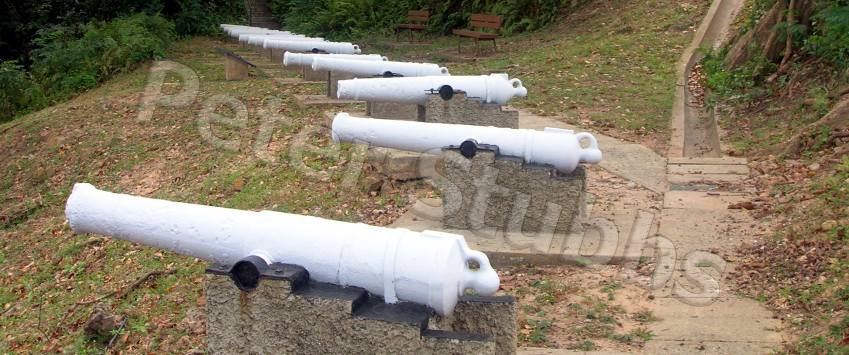
The Istana Guns at Fort Siloso
It is not beyond the realms of possibility that some of the Istana Guns formed Singapore’s first gun battery at Scandal Point.
Malay Cannon
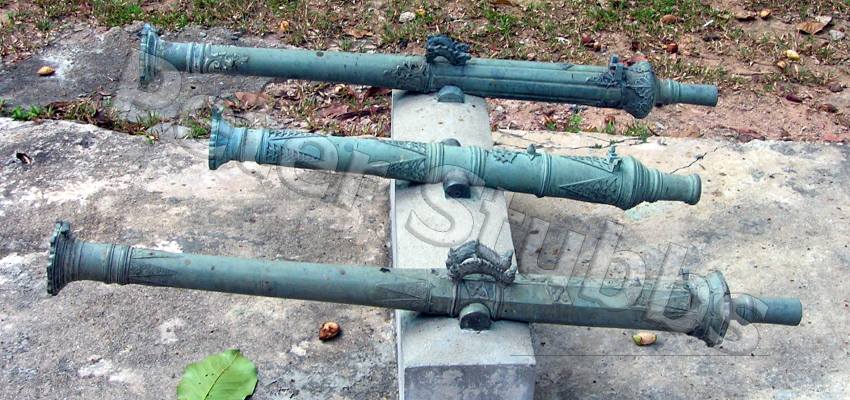
On display at Fort Siloso
The history of Malay cannon goes back many hundreds of years. Large junks trading from China carried cannon, and it is more than probable that some of these traders made landfall in the Malay Archipelago. The armament would certainly have aroused interest in the local population and those of military mind.
Before the European powers arrived, cannon were in in service in the region. When Alfonso de Albuquerque and his Portuguese forces invested Melaka in 1511, he found cannon ranged against him. When he took the town he found a large quantity of cannon there. The cannon must have been quite small as his guns easily outranged them.
Wheeled artillery such as that known in Europe was not widely used. Instead, the Malays would have seemed to prefer to have their ‘lela’ or ‘meriam kecil’ (small cannon) with swivel mounts. The design of Malay cannon also differed from their European counterparts. They lacked a Cascabel, instead generally having a cylindrical like protrusion at the rear. Presumably this was used to aid the aiming of the cannon. A ‘cagak’ was fitted to the cannon trunnions. This was ‘U’ shaped and had a spike projecting below it. This would fit into sockets on the walls of a fort, or the side of a ship. A disadvantage of this was that unlike wheeled cannon, the recoil had to be absorbed by the fixture. Even being small bore, the force exerted by the recoil would have been substantial.
Malay cannon were generally of quite small calibre, but some made in Singora, then under Malay control were larger. The Dutch found to their cost, the effectiveness of larger Malay cannon, when one of their ships of the line was sunk by them off Makassar in 1667.
Malay Cannon were highly decorated with scroll, floral and other designs. Generally, the muzzle was flared, sometimes with a dragon’s mouth, possibly a Chinese influence. Not all the cannon barrels were round. There are many examples of octagonal and other similar shapes. Sights were often a small flare at the muzzle and a bulge or two ear shapes at the back of the weapon.

Malay Cannon
Signal Cannon
 A small Signal Cannon. Scarcely larger that toy size It would be used to fire salutes or warning signal shots. Some are used to this day to start yacht races.
A small Signal Cannon. Scarcely larger that toy size It would be used to fire salutes or warning signal shots. Some are used to this day to start yacht races.